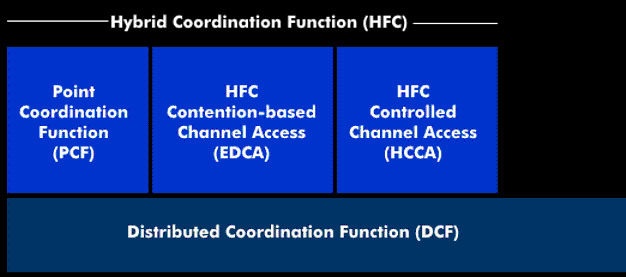IEEE 802.11e
The IEEE 802.11e working group is developing mechanisms to support a defined quality of service( QoS) for radio links in WLANs. Priority mechanisms to ensure specific response times are being developed in this standard.
802.11e is intended to improve real-time behavior and thus enable voice and video transmissions. Priority is given to applications with real-time behavior over pure data applications. This means that 802.11e has created the prerequisites for Voice over WLAN( VoWLAN) or video and audio streaming. The standard is compatible with the prioritization used in fixed networks, namely Type of Service( ToS) and the Differential Service Code Point( DSCP). Delay times and jitter remain below two milliseconds and are therefore imperceptible to human hearing.
The MAC layer of 802.11e consists of a distributed coordination function( DCF) and a point coordination function( PCF). While the DCF implementation is mandatory in the 802.11e standard, the PCF implementation is optional. In both methods, media access is coordinated by different interframe spaces( IFS). The DCF method is the basis for WLAN communication and works with CSMA/ CA as a collision-free media access method on the radio link.
802.11e is used, among other things, in mobile employee communications via VoWLANs and in WiFiMultimedia( WMM). Another area of application is in automotive technology, where a defined response time behavior is mandatory.
The 802.11e standard uses the Enhanced Distributed Coordination Function( EDCF) to ensure a predictable access time of a subscriber to the 802.11 radio network.


